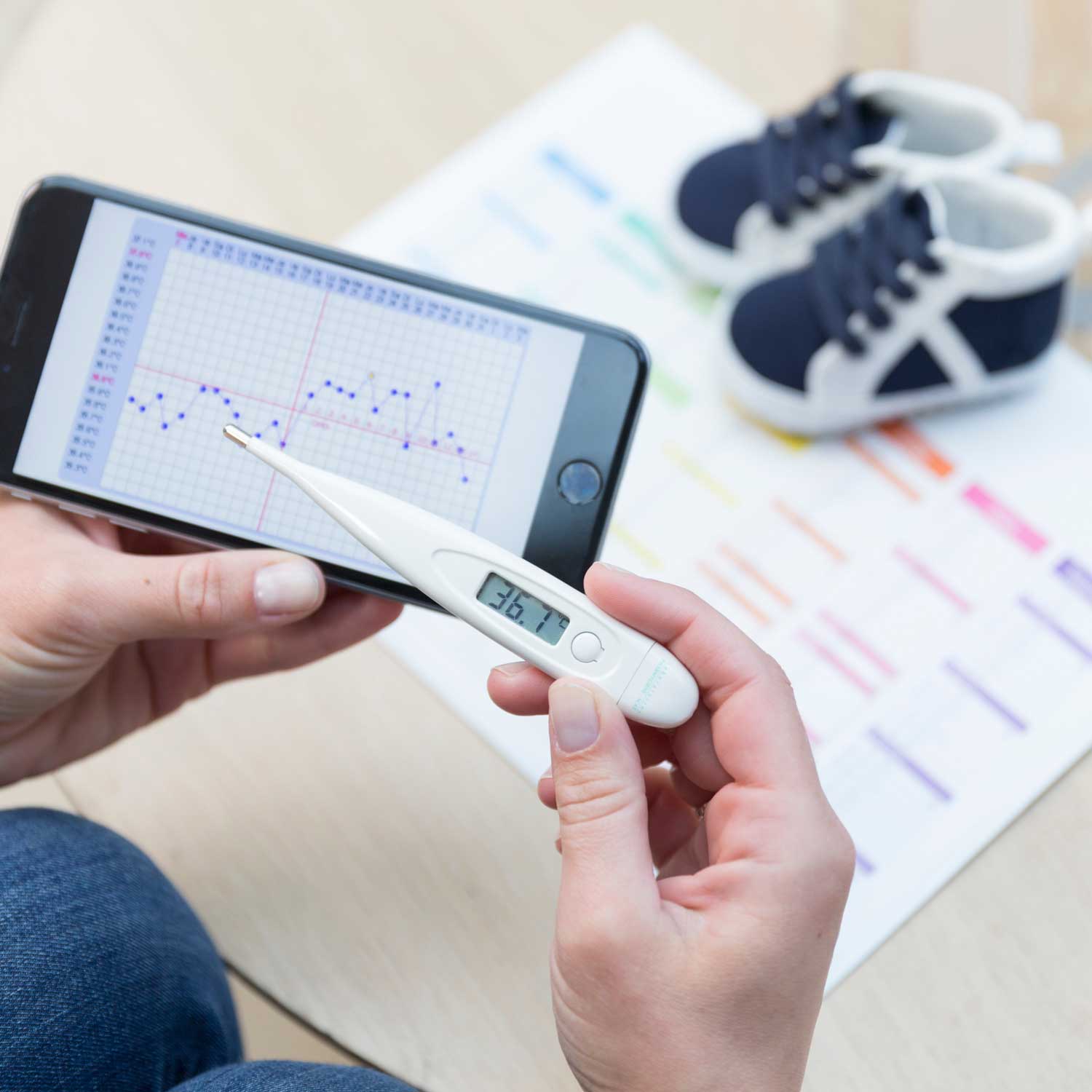Blog originally published by American Society for Reproductive Medicine (ASRM)
Ovulation, the release of an egg from its follicle in one of a woman’s two ovaries, is one of the most important factors in conceiving a child. Once ovulated, the egg is picked up by one of the fallopian tubes and begins traveling toward the uterus. In order for traditional conception to occur, the man must ejaculate his semen, the fluid containing the sperm, into the woman’s vagina near the time of ovulation. The man’s sperm must be capable of swimming through the vagina and cervical mucus, up the cervical canal into the uterus, and up into the fallopian tube, where it must attach to and penetrate the egg in order to fertilize it. The fertilized egg remains in the fallopian tube for a few days and then continues traveling to the uterus and implants in the endometrium (lining of the uterus), where it grows and matures. If all goes well, a child is born approximately nine months later.
Ovulation is triggered by a surge of luteinizing hormone (LH) in the woman’s blood, and occurs approximately 36 hours after the start of this LH surge. If the egg is fertilized and implants in the endometrium, a pregnancy is established. If a pregnancy is not established, the endometrial lining that develops in preparation for pregnancy is shed as the menstrual flow.
Because a variety of problems can prevent or disrupt ovulation and result in infertity, often it is necessary to determine whether or not a woman is ovulating. There are several ways to detect ovulation, including urine test kits to measure LH levels, transvaginal ultrasound, endometrial biopsy, blood tests to measure hormone levels, and the basal body temperature (BBT) chart.
Urine Test Kits to Measure Luteininzing Hormone (LH) Levels
Several ovulation prediction tests are available at drug stores. These kits use test strips that show changes in the level of LH in the urine. Once the LH surge has occurred, ovulation usually takes place within 12 to 36 hours. Urine testing usually begins two days prior to the expected day of ovulation. For women with 28-day cycles, ovulation usually occurs on days 13 to 15. For women with irregular menstrual cycles, urine testing should be timed according to the earliest and latest possible dates of ovulation. If the cycle ranges between 27 to 34 days, ovulation usually occurs between days 13 to 20. Therefore, testing should begin on day 11 and continue until ovulation is indicated or through day 20. There is an 80% chance of detecting ovulation with five days of testing, and a 95% chance with 10 days of testing. Once ovulation is documented, it is no longer necessary to continue testing during that cycle. Occasionally, ovulation may not occur in a particular cycle. If ovulation is not detected in two or more consecutive cycles, an ovulatory problem may be present.
Transvaginal Ultrasound
Follicular growth can be measured with ultrasound, a technique which uses sound waves to produce an image on a monitor screen. This is a painless procedure usually done with a probe inserted into the vagina, but may be done with an external probe placed on the abdomen. Prior to ovulation, the follicle is thin-walled and filled with fluid. As the egg inside the follicle develops, the follicle increases in size. Ovulation generally occurs when the follicle measures about 1.8 to 2.5 centimeters. Ultrasound may be useful for timing intercourse or insemination. In women taking fertility drugs, ultrasound may be performed on several different days during the menstrual cycle so that each follicle can be measured precisely and monitored.
Endometrial Biopsy
Progesterone, a natural ovarian hormone, helps prepare the endometrium to receive an embryo. An endometrial biopsy is occasionally used to determine if a woman has ovulated, and if the endometrium has been adequately stimulated with progesterone. During this office procedure, a small amount of endometrial tissue from inside the uterine cavity is removed and examined under a microscope. This test is performed just before menstruation is expected to begin. In order to interpret the endometrial biopsy, the physician will need to know the day that menstruation begins after the biopsy. Maintaining a BBT chart and/or using an ovulation prediction test kit may be helpful in determining the best day to perform an endometrial biopsy and in interpreting the result.
Blood Tests to Measure Hormone Levels
Elevated progesterone levels in the blood usually are associated with ovulation. A blood test to measure progesterone can be performed about one week before the anticipated onset of the next menstrual period. The LH surge occurs just before ovulation. LH levels in the blood or urine can be measured to predict when the follicle is mature and ready for ovulation. Estrogen is secreted by the growing follicle and rises rapidly prior to ovulation. If ovulation is being induced with fertility drugs, frequent estrogen level measurements may be needed to determine follicular growth.
Basal Body Temperature (BBT) Chart
The basal body temperature chart helps to monitor the duration of the different phases of the menstrual cycle, and can help determine if and when ovulation has occurred. During the follicular phase, the woman’s body temperature is relatively low. When progesterone production begins at ovulation, it produces a temperature rise with a minimum increase of 0.5 degrees Fahrenheit. An increased body temperature for several days indicates ovulation has occurred. BBT charts cannot predict when ovulation is going to occur; they only confirm that ovulation has occurred after the fact. Some women will monitor changes in their cervical mucus along with their BBT. As ovulation approaches, a woman’s cervical mucus becomes more abundant, thin, slippery, and stretchy. This is an inexpensive, natural way to help identify a woman’s most fertile days.
Conclusion
Although determining if and when ovulation is occurring might seem frustrating and time consuming, it is often an essential step toward achieving pregnancy. It is important that women work with their physicians to decide which method of ovulation detection is best for them. If these tests indicate that the woman is not ovulating, or that she has irregular cycles, treatments are available to correct the problem and increase the chances of a successful pregnancy

